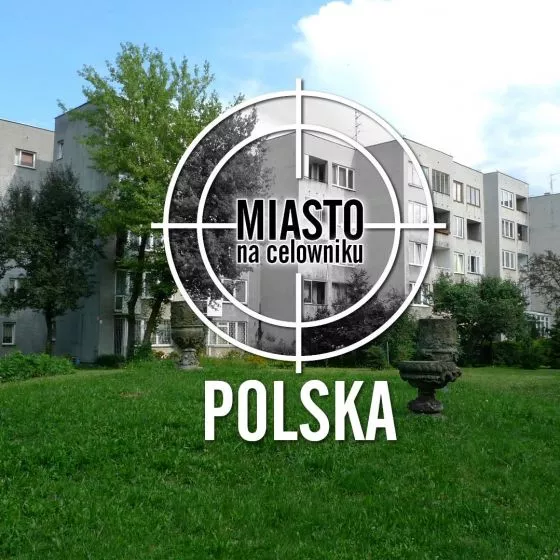Nowa Mangalia is a new Warsaw housing development by the GCK Architekci project. The building, located between Sobieskiego Street and busy Sikorskiego Avenue, is an example of how to take advantage of the constraints of the local development plan and turn them into a functional and resident-friendly building.
The estate by GCK Architkeci is distinguished from neighboring buildings by the shape of the main fac ade on the side of Sikorskiego Avenue. Restrictions on the location of apartments resulting from the local plan became the basis for carving up the front of the building. The architects' goal was also to use divisions on the facade, which will make the scale of the building not overwhelming.
The Nowa Mangalia estate is being built in Warsaw
© GCK Architekci
Nowa Mangalia is a mixed-use development. The predominant function is apartments, but the first floor on the side of the main street has been designed with commercial premises, including a retail unit that meets the requirements of discount stores. A communication link between the commercial and residential sections, allows residents to shop without leaving the building. The store will also be accessible to visitors from outside. Spaces in the underground garage, in the public area, have been planned for this purpose.
Green areas have been created on the embankment covering the hall of the commercial premises
© GCK Architects
A very important role in the design of the estate was played by the solution of green and recreational areas. For this purpose, the architects used the service premises hall facing the courtyard. They covered it with earth, and leveled the terrain differences between the higher and lower parts by routing pedestrian communication interspersed with embankments. The resulting embankment was covered with abundant vegetation, trees and colorful shrubs, creating a park-like atmosphere and emphasizing the sculpted terrain of the inner courtyard. On the upper part of the green areas, a space for the youngest and green fields allowing picnics were proposed. The entire communication design takes into account the needs of people with disabilities, as well as mothers with strollers.
The architects wanted a good urban design to complement and organize the empty space between the hotels
© GCK Architects
Dobrawa Bies: What was your priority in this project?
GCK Architects: We cared very much about a good urban complement and ordering of the large empty space between the existing hotels standing between Sobieskiego Street and al. Sikorskiego. It was very important to guarantee future residents' comfort despite the proximity of the very busy and noisy Sikorskiego Avenue. The local plan, on the one hand, helped us in this by introducing restrictions on the location of apartments on the side of the alley, on the other hand, it made it difficult to shape the elevation, which could not have windows on a large section from the living quarters.
The main façade of the building is heavily sculpted
© GCK Architects
Dobrawa: What did the developer expect?
GCK Architects: For the developer, New Mangalia is a debut in the residential market, as it specializes in hospitality. Our task was to create a distinctive building that would be well received and, above all, functional.
In the case of Nowa Mangalia, the separation of function and accessibility was very important. The combination of the supermarket premises and the residential function with a shared garage required very clear, intuitive solutions that would ensure the safety of the residents while allowing easy access to services. Resident satisfaction is the key to success.
the layout of the building makes the New Mangalia perceived as two buildings
© GCK Architects
Dobrawa: The buildings are characterized by large loggias and an interesting facade. What was the inspiration and the shape of the massing?
GCK Architects: The main facade is highly sculpted, so that it is not too monotonous. The two-story division making it resemble a chocolate bar was primarily intended to visually lower the building.
The layout of the building, resulting from the ability to light up the residential units, made New Mangalia perceived as two buildings. In order to avoid the overwhelming repetitiveness familiar from the neighborhood's large-panel architecture, the elevations are differentiated, each with its own leitmotif, but together they form a coherent whole.
There is a shopping center under the embankment
© GCK Architekci
Dobrawa: Designing multi-family architecture, such as housing estates, is definitely different from designing individual houses or apartments. Is it much more difficult? What are the limitations and what are the possibilities?
GCK Architects: Single-family house projects or apartment arrangements require emphasis on other elements of the architect's work. One cannot unequivocally say that creating multifamily architecture is "more difficult." It certainly requires excellent coordination, as the scale of the building determines the amount of information the project must contain. The entire team must work like a well-oiled machine - this is the key to success. Simply put, with a larger facility we solve "more problems." Unlike an individual project, when designing a building complex we are creating a public space. We need to meet the expectations and needs of a wide range of people - the attractiveness of the environment determines the well-being of the users. Fitting properly into the surroundings means that when designing a housing estate, we are actually re-creating a micro-fragment of the city. We can consider this aspect as "opportunities." Our studio also has single-family houses in its portfolio, and it should be emphasized that working with an individual client looks completely different than with a developer. When designing a house for a particular family, we need to identify the intentions, preferences and needs well and find the best solutions. It is also a challenge to reconcile the client's requirements with design art and functionality.
Dobrawa: Thank you for the interview.
Dobrawa Bies





































